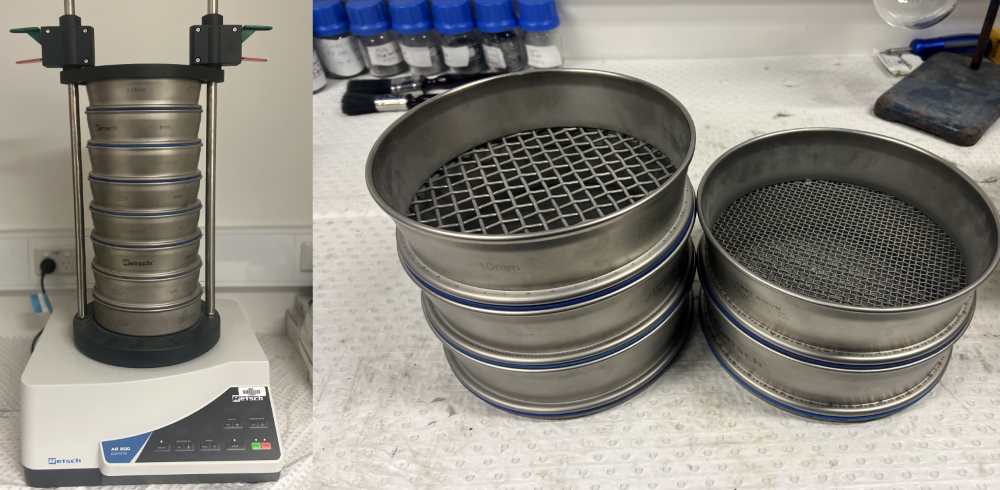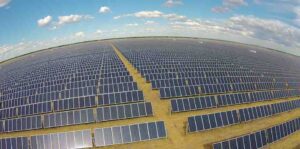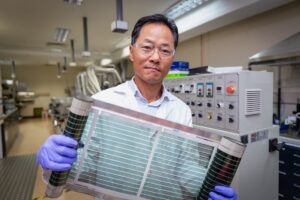Researchers from the University of New South Wales (UNSW) have developed a new way of separating used solar panels and grinding them down to allow for easier recovery of important metals, including silver.
The UNSW team’s patented process removes the aluminium frame and glass sheets from a panel and then puts crushed-up panel pieces inside a vibrating sieve device. The device uses stainless steel balls to crush the panel pieces further and separated into different-sized particles.
Once the crushed PV panel has been sieved, it can then be chemically leached – which is the traditional process. The researchers were able to extract 99% of the silver from a solar cell in testing.
The sieve process has not been peer-reviewed in a scientific journal yet, as the team first wanted to patent the mechanism to hopefully commercialise the process in the future.
UNSW researcher Professor Yansong Shen says finding better ways to manage solar panels at the end of their generating lives addresses a “pressing and urgent” environmental problem, but also a valuable opportunity.
“Putting solar panels into landfill is a big issue because there are a number of harmful metals in the panels that can pollute the soil and pollute the water. So for environmental reasons we also need to find a better way to recycle the panels,” says Shen.
“At the same time, the end-of-life is a source of many valuable metals like silver if they can be properly recycled.”
Silver is particularly sought after by the researchers because it’s used as a paste on the front and back of the silicon cells as a conductor. With so many solar panels being made, this amounts to a large amount of silver. In 2021, the solar PV industry consumed a whopping 13% of the annual global silver supply.
A big problem – and a big potential resource
Australia has one of the highest uptakes in solar globally, with 30% of homes having rooftop PV and many larger solar systems having been set up in car parks, solar farms and businesses across the country.
Although Victoria, South Australia and the ACT have all banned solar panels heading to landfills at the end of their life, they’re still difficult to pull apart and recycle.
There’s only a handful of recycling places in the whole country, and while some claim they can recycle 100% of the PV module, most strip the aluminium from the frame and stockpile the rest of the panel.

“If we do not have a simple method for high-abrasion separation, then we can’t effectively move on to the third step, which is recovering the various material that has been separated and being able to reuse it,” says Shen.
“The key to our new process is the addition of the sieving aids which help to crush the solar cells into smaller particles allowing a better separation of all the components. That makes it much easier to recover important elements such as the silver contained in the solar cells.
“I think people are just starting to realise how important it is that we can recycle these PV cells in an environmentally friendly way,” says Shen.










